Nationality American Movies Justice League of America Role Writer | Name Gardner Fox Area(s) Writer | |
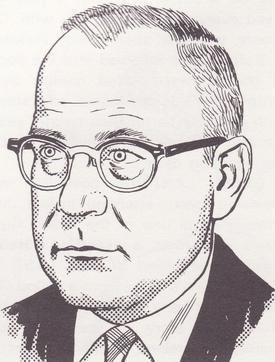 | ||
Born Gardner Francis Cooper FoxMay 20, 1911Brooklyn, New York, United States ( 1911-05-20 ) Pseudonym(s) Jefferson CooperBart SommersPaul DeanRay GardnerLynna CooperRod GrayLarry DeanRobert StarrDon, Ed, Warner and Michael BlakeTex and Willis BlaneEd CarlisleEdgar WestonTex SladeEddie DuaneEtc. Notable works Golden Age: Doctor Fate; Flash; Hawkman; Justice Society of America; Sandman; Starman.Silver Age: Atom; Batgirl; Hawkman; Justice League of America; Zatanna; Books Crisis on Multiple Earths, Showcase Presents Green La, Tales of the Batman: Carmine I, The Adam Strange Archives, The Hawkman archives Similar People | ||
Gardner fox at comics week 6 lesson 8
Gardner Francis Cooper Fox (May 20, 1911 – December 24, 1986) was an American writer known best for creating numerous comic book characters for DC Comics. Comic book historians estimate that he wrote more than 4,000 comics stories, including 1,500 for DC Comics.
Contents
- Gardner fox at comics week 6 lesson 8
- Early life and career
- Novels
- Golden Age
- Batman
- Sandman
- The Flash
- Hawkman
- The Justice Society of America
- Non DC work
- Silver Age
- The Justice League of America
- Multiverse
- Silver Age Batman
- Leaving DC
- Later comics work
- Hobbies and achievements
- Awards
- Legacy
- References
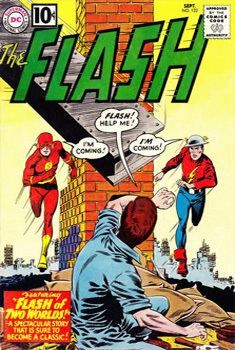
Fox is known as the co-creator of DC Comics heroes the Flash, Hawkman, Doctor Fate and the original Sandman, and was the writer who first teamed those and other heroes as the Justice Society of America. Fox introduced the concept of the Multiverse to DC Comics in the 1961 story "Flash of Two Worlds!"
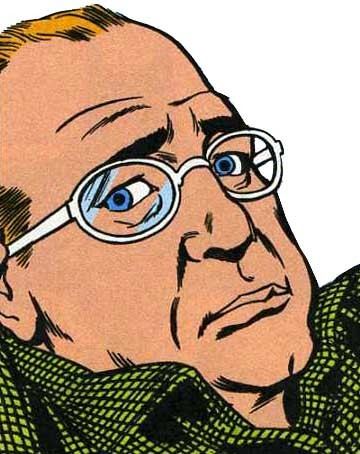
Early life and career
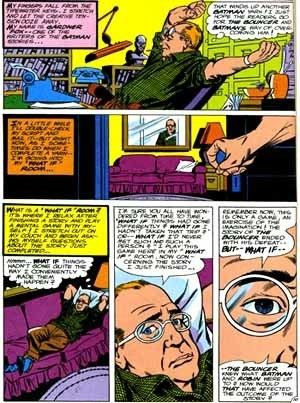
Gardner F. Fox was born in Brooklyn, New York, the son of Julia Veronica (Gardner) and Leon Francis Fox, an engineer. Fox recalled being inspired at an early age by the great fantasy fiction writers. On or about his eleventh birthday, he been given The Gods of Mars and The Warlord of Mars by Edgar Rice Burroughs, books which "opened up a complete new world for me." He "read all of Burroughs, Harold Lamb, Talbot Mundy," maintaining copies "at home in my library" some 50 years later.
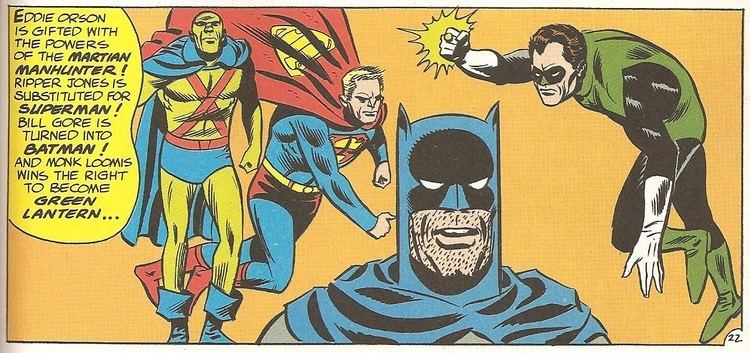
Fox received a law degree from St. John's College and was admitted to the New York bar in 1935. He practiced for about two years, but as the Great Depression continued he began writing for DC Comics editor Vin Sullivan. Debuting as a writer in the pages of Detective Comics, Fox "intermittently contributed tales to nearly every book in the DC lineup during the Golden Age." He was a frequent contributor of prose stories to the pulp science fiction magazines of the 1930s and 1940s.
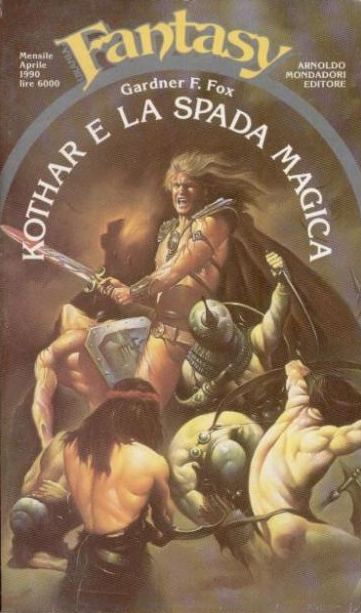
A polymath, Fox included numerous real-world historical, scientific, and mythological references in his comic strips, once saying, "Knowledge is kind of a hobby with me". For instance, during a year's worth of Atom comic strip stories, Fox referred to the Hungarian Revolution of 1956, the space race, 18th-century England, miniature card painting, Norse mythology, and numismatics. He revealed in letters to fan Jerry Bails that he kept large troves of reference material, mentioning during 1971, "I maintain two file cabinets chock full of stuff. And the attic is crammed with books and magazines....Everything about science, nature, or unusual facts, I can go to my files or the at least 2,000 books that I have".
Novels
During his career writing for DC Comics, Fox wrote novels and short stories using a variety of male and female pseudonyms for a number of publishers, including Ace, Gold Medal, Tower Publications, Belmont Books, Dodd Mead, Hillman, Pocket Library, Pyramid Books and Signet Books.
During the mid-to-late 1940s, and into the 1950s, Fox wrote a number of short stories and text pieces for Weird Tales and Planet Stories, and was published in Amazing Stories and Marvel Science Stories. He wrote for a diverse range of pulp magazines, including Baseball Stories, Big Book Football Western, Fighting Western, Football Stories, Lariat Stories, Ace Sports, SuperScience, Northwest Romances, Thrilling Western, and Ranch Romances for a number of publishing companies.
Fox wrote a pair of science fiction novels titled Warriors of Llarn (1964) and Thief of Llarn (1966).
From 1969 to 1970, Belmont Books published a series of sword and sorcery novels by Fox, featuring the barbarian character Kothar. These were Kothar: Barbarian Swordsman, Kothar of the Magic Sword, Kothar and the Demon Queen, Kothar and the Conjurer's Curse and finally Kothar and the Wizard Slayer. These were followed in 1976 by another series (published by Leisure Books) featuring the barbarian Kyrik: Kyrik: Warlock Warrior, Kyrik Fights the Demon World , Kyrik and the Wizard's Sword and Kyrik and the Lost Queen.
Kothar and the Conjurer's Curse was adapted by Marvel Comics as a six-part Conan story starting with Conan the Barbarian #46 ("The Curse of the Conjurer", Jan. 1975) with scripter Roy Thomas and artists John Buscema, Joe Sinnott, Dan Adkins, and Dick Giordano.
Golden Age
Fox's earliest stories for DC Comics featured Speed Saunders with art by Creig Flessel and later Fred Guardineer beginning at least with Detective Comics #4 (June 1937). Speed Saunders was initially credited to "E.C. Stoner," which many believe to be a Fox pseudonym. As the 1930s progressed, Fox added writing credits for Steve Malone and Bruce Nelson for Detective Comics to his workload, as well as Zatara for early issues of Action Comics.
During World War II, Fox assumed responsibility for a variety of characters and books of several of his colleagues who had been drafted. He worked for numerous companies including Marvel Comics' 1940s predecessor, Timely Comics; Vin Sullivan's Magazine Enterprises, where he created Skyman; and at EC, where he served a brief stint as chief writer. With the waning popularity of superheroes, Fox contributed western, science fiction, humor, romance, and funny animal stories.
Batman
During July 1939, just two issues after debut of the character Batman by artist Bob Kane and writer Bill Finger, Fox wrote the first of his several tales for that character, introducing an early villain in the story "The Batman Meets Doctor Death". Alongside Kane and Finger, Fox contributed to the evolution of the character, including the character's first use of his utility belt, which "contain[ed] choking gas capsules," as well as writing the first usages of both the Batarang and the Batgyro, an autogyro precursor to the Batcopter, two issues later.
Fox returned to the Batman in 1964. (See below)
Sandman
During 1939, Fox and artist Bert Christman co-created the character of the Sandman, a gasmask-wearing costumed crime-fighter whose first appearance in Adventure Comics #40 (July 1939) was pre-empted by an appearance in New York World's Fair Comics.
The Flash
Fox is credited with writing the first three of six stories in the inaugural issue of Flash Comics (Jan. 1940), including the debut of the titular character, The Flash. With a hero described as a "modern-day Mercury", the title feature saw college student Jay Garrick imbued with superhuman speed after inhaling hard water vapors. The character went on to appear in a host of forties comics, including All Star, Comic Cavalcade, The Big All-American Comic Book, and his own titles, Flash Comics and All-Flash.
Hawkman
Describing the origins of Hawkman, Fox recalled, "I was faced with the problem of filling a new book that publisher Max Gaines was starting... As I sat by the window I noticed a bird collecting twigs for a nest. The bird would swoop down, pick up the twig, and fly away. I thought, 'Wouldn't it be great if the bird was a lawman and the twig a crook!'"
Debuting as the third story in Flash Comics #1 (Jan. 1940) — "Fox's imagination [transformed] that bird [into] the soaring, mysterious Hawkman." With art by Dennis Neville, the origin of the 'Winged Wonder' featured archaeologist and collector Carter Hall reliving his past life as Prince Khufu of ancient Egypt, creating a costume (powered by Nth metal), confronting the reincarnation of Hath-Set, his former nemesis, and meeting his reincarnated love interest, Shiera Saunders.
The Justice Society of America
Regularly writing more than six stories in five titles per month, every month throughout the early 1940s, Fox continued to create new features.
At the time, DC Comics consisted of two discrete sub-companies, Max Gaines' All-American Publications and Harry Donenfeld & Jack Liebowitz's National Periodical Publications. Though he continued to script for National/Detective Comics, Inc., Fox became the chief writer for All-American. While Fox's Dr. Fate (and other titles) was published by National; Sandman, Hawkman and the Flash were released by All-American. For Winter 1940, the third issue of All-American's All Star Comics debuted the Justice Society of America, the first superhero team in comics. Fox had worked on the Hawkman, Flash and Sandman features in All-Star for its first two issues (Summer and Autumn 1940), but from issue #3 (Winter), he assumed full writing duties for the issue, with all features by different artists working within the framing device wherein the characters were described as part of a "Justice Society".
In the pages of All-Star Comics #3, under the direction of editor Sheldon Mayer and with artists including E. E. Hibbard, Fox created the first superhero team, the Justice Society of America. Each character – Dr. Fate, the Sandman, the Flash, and Hawkman were joined by Hour-Man, the Spectre, the Atom and Green Lantern – was introduced individually (by Johnny Thunder), and related a solo adventure, before being charged at the title's end with remaining a loose team by the Director of the FBI. During April 1941, Fox created the character of Starman with artist Jack Burnley in the pages of Adventure Comics #61 (April 1941), and the character would later join the JSA. Fox wrote the Justice Society's adventures from All Star Comics #3 until leaving the feature as of issue #34 (April–May 1947) with a story that introduced a new super-villain, the Wizard.
Non-DC work
Between 1940 and 1941, Fox wrote for the Columbia Comic Corporation, penning stories featuring characters including "Face," "Marvelo," "Rocky Ryan," "Skyman," and "Spymaster." For approximately three years (1947–50), Fox wrote for EC Comics, including scripts and text pieces which appeared in the titles The Crypt of Terror, The Vault of Horror and Weird Fantasy, as well as in the lesser-known Gunfighter, Happy Houlihans, Moon Girl, Saddle Justice and the new trend title Valor, among others.
Towards the end of the decade, and the start of the 1950s, he worked for Magazine Enterprises on features including "The Durango Kid," the first Ghost Rider, "Red Hawk," "Straight Arrow" and "Tim Holt," in whose comic the Ghost Rider appeared. Fox wrote some of the required text pieces for Magazine Enterprises, which were required by the Post Office to qualify magazines and comics for cheaper postal rates.
Throughout the 1950s, Fox wrote stories for Avon Comics, most notably tales of "Crom the Barbarian", and of "Kenton of the Star Patrol."
Silver Age
During the early 1950s, Fox wrote Vigilante in Action Comics, as well as Western stories in the pages of Western Comics and science-fiction stories for DC's Mystery in Space and Strange Adventures. During 1953, he entered into correspondence with fan Jerry Bails, which initially emphasized Bails' fondness for the Justice Society and All-Star Comics, but ultimately became a friendship that not only influenced the beginning of comics' so-called "Silver Age", but also comics fandom, in which Bails had a major role.
During the mid-1950s, after Fredric Wertham's publication of Seduction of the Innocent and the United States Senate Subcommittee on Juvenile Delinquency hearings on the dangers of comic books, the content of comics was changed and became subject to censoring by the private Comics Code Authority. In partial response to this shift, DC editor Julius Schwartz began a widespread reinvention/revival of many earlier characters, and "Fox was one of the first writers... Schwartz called in to help". The Silver Age of Comic Books began in the pages of Showcase #4 (Oct. 1956) with a radically changed Flash character by writers Robert Kanigher and John Broome with penciler Carmine Infantino.
Fox scripted most of the Silver Age adventures of science-fiction hero Adam Strange, who debuted in the comic book Showcase #17 (Nov. 1958) with art by Mike Sekowsky. The Adam Strange stories were co-plotted by Fox and the character's creator, Julius Schwartz. With the "creative guidance" of Fox and Schwartz, "Hawkman and the Atom were given new costumes, new identities," and drew an audience of fans old and new. Fox penned the reinvention of the new Hawkman in The Brave and the Bold #34 (March 1961) and the Atom, who debuted in Showcase #34 (Sep–Oct. 1961) with art by Gil Kane.
The Justice League of America
Another of Fox's major achievements was his revival of the concept of the Justice Society as the Justice League of America, debuting in the comic book The Brave and the Bold #28 (Feb.-Mar. 1960). Soon given their own title during Oct.-Nov. 1960, the Justice League would become the basis of the DC Universe. The supervillain Doctor Light first battled the team in issue #12 (June 1962). Justice League of America #21 and #22 (August–September 1963) featured the first team-up of the Justice League and the Justice Society of America as well as the first use of the term "Crisis" in reference to a crossover between characters. The next year's team-up with the Justice Society introduced the threat of the Crime Syndicate of America of Earth-Three. The character Zatanna, introduced by Fox and artist Murphy Anderson in Hawkman #4 (Nov. 1964), was the center of a plotline which ran through several DC titles and was resolved in Justice League of America #51 (Feb. 1967). Fox and Sekowsky were the creative team for the title's first eight years. Sekowsky's last issue was #63 (June 1968) and Fox departed with #65 (September 1968).
Multiverse
Fox's script for "Flash of Two Worlds!", from The Flash #123 (Sept. 1961), introduced the concept that the Golden Age heroes existed on a parallel Earth named Earth-Two, as the current Flash, Barry Allen, travels to the Earth of Jay Garrick, the 1940s Flash. This event heralded more generally the concept of the DC Comics Multiverse, a decades-long recurring theme of the DC Comics universe, allowing old and new heroes to co-exist and crossover.
In a mischievous twist, Gardner Fox is actually referenced in the story -- in Barry Allen's world, the adventures of Jay Garrick's Flash appeared in comic books written by Fox. As Barry explains, "A writer named Gardner Fox wrote about your adventures -- which he claimed came to him in dreams! Obviously when Fox was asleep, his mind was 'tuned in' on your vibratory Earth! That explains how he 'dreamed up' the Flash!" At the end of the story, Barry says, "I'm going to look up Gardner Fox, who wrote the original Flash stories, and tell it to him! He can write the whole thing up... in a comic book!"
Silver Age Batman
During 1964, Schwartz was made responsible for reviving the Batman titles and Fox returned to writing Batman stories. Obeying the Silver Age trends, he reintroduced characters including the Riddler and the Scarecrow. Fox's "Remarkable Ruse of the Riddler" with art by Sheldon Moldoff in Batman #171 (May 1965). Eighteen issues later, Fox and Moldoff similarly resuscitated and relocated Professor Jonathan Crane, launching the Earth-1 Scarecrow in "Fright of the Scarecrow", Batman #189 (Feb 1967). He and artist Carmine Infantino created the Blockbuster in Detective Comics #345 (Nov. 1965) and the Cluemaster in issue #351 (May 1966). Fox and Infantino introduced Barbara Gordon as a new version of Batgirl in a story titled "The Million Dollar Debut of Batgirl!" in Detective Comics #359 (January 1967). Fox's final Batman story, "Whatever Will Happen to Heiress Heloise?", was published in Detective Comics #384 (Feb. 1969).
Leaving DC
Fox stopped receiving work from DC during 1968, when the comics company refused to give health insurance and other benefits to its older creators. Fox, who had written a number of historical adventure, mystery and science fiction novels during the 1940s and the 1950s, began to produce novels full time, using his own name and several pseudonyms. He produced a small number of comics during this period, but predominantly produced novels, writing more than 100 in genres such as science fiction, espionage, crime, fantasy, romance, western, and historical fiction.
Among his output was the modern novelisation of the Irwin Allen production of Jules Verne's Five Weeks in a Balloon, two books of the "Llarn" series; five books about the barbarian swordsman Kothar, starting during 1969 with the anthology Kothar—Barbarian Swordsman, and four books about the adventures of "Kyrik," starting with Warlock Warrior (1975).
For Tower Books, Belmont Books, and Belmont-Tower, he produced between thirteen and twenty-five "Lady from L.U.S.T." (League of Undercover Spies and Terrorists) novels between 1968 and 1975 using the name Rod Gray. (see also: The Man from O.R.G.Y.) With Rochelle Larkin and Leonard Levinson, Fox used the pen-name "Glen Chase" to write entries in the "Cherry Delight, The Sexecutioner" series.
Later comics work
During the early 1970s, Fox briefly worked for DC's rival publisher, Marvel Comics, writing scripts for The Tomb of Dracula, Red Wolf, and the "Doctor Strange" feature in Marvel Premiere. During 1971, Skywald Publications reprinted some of his earlier work on titles such as Demona, Nightmare, Red Mask and Zanagar, and Fox also found work for Warren Publications on Creepy and Eerie during the same period.
Towards the end of his life, during 1985, he worked briefly for Eclipse Comics including on the science fiction anthology Alien Encounters.
Fox died on December 24, 1986 after spending six years at a medical center in Princeton, New Jersey. He was survived by his wife Lynda, his son Jeffrey, his daughter Lynda, and four grandchildren.
Hobbies and achievements
During the course of his career, Fox can be definitely credited with about 1500 stories for DC Comics, making him the second most prolific DC creator (after Robert Kanigher) by a considerable margin over his nearest rival. In July 1971, Fox estimated he had written "[f]ifty million words" over the course of his career to date.
He was a member of a number of literary and genre organisations, including the Academy of Comic Book Arts, the Authors Guild, the Authors League of America, and the Science Fiction Writers of America. As a lawyer, he was a member of the legal fraternity Phi Delta Phi.
A sports fan, he liked both "the Mets and the Jets," and (during 1971) had "season tickets to the St. John's games." A voracious reader, he stated, "I have two writers that I reread and reread. One that I'm sure nobody's every [sic] heard of is Jeffery Pond [sic]. I have every book he ever wrote. The other is the mystery writer John Dickson Carr, whose style I admire tremendously... and of course the old standbys – Merritt I always particularly liked – and Burroughs."
Awards
Fox won two 1962 Alley Awards – for Best Script Writer and for Best Book-Length Story ("The Planet that Came to a Standstill" in Mystery in Space #75), with penciler Carmine Infantino — as well as a 1963 Alley, for Favorite Novel ("Crisis on Earths 1 and 2" in Justice League of America #21–22, with penciler Mike Sekowsky), and the 1965 Alley for Best Novel ("Solomon Grundy Goes on a Rampage" in Showcase #55) with penciler Murphy Anderson.
He was honored at the New York Comic Art Convention during 1971. During 1982, at Skycon II, he was awarded the "Jules Verne Award for Life-time achievement."
Legacy
During 1967, Fox's literary agent, August Lenniger, suggested that Fox donate his notes, correspondence, and samples of his work to the University of Oregon as a tax deduction. Fox donated over fourteen boxes of comics, books, scripts, plot ideas, and fan letters dating back to the 1940s. His records comprise the bulk of the university's Fox Collection.
The Guy Gardner character is named after Fox. During 1985, DC Comics named Fox as one of the honorees in the company's 50th anniversary publication Fifty Who Made DC Great.
During 1998, he was posthumously awarded a Harvey Award and entered into the Jack Kirby Hall of Fame; a year later, he was inducted into the Eisner Award Hall of Fame.
During 2007, Fox was one of the year's two recipients of the Bill Finger Award for Excellence in Comic Book Writing, given under the auspices of San Diego Comic-Con International.
During 2002, the Cartoon Network broadcast an episode of the Justice League animated TV series titled "Legends", an homage to Fox's Justice Society and his annual Silver Age Justice Society/Justice League crossovers. The episode was dedicated to Fox. Additionally, in the episode titled "Paradise Lost", a TV news reporter refers to Hurricane Gardner.
In the sixth episode of the second season of Young Justice, during a disaster which destroys part of the city, the Flash directs a woman to a homeless shelter that is located between streets named Gardner and Fox.
